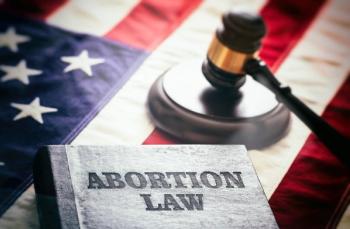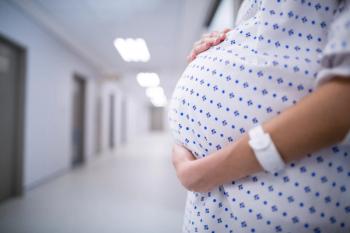
Laparoscopic treatment of endometriosis in patients with failed in vitro fertilization cycles
Endometriosis is one of the most common gynecologic disorders and is significantly more prevalent in the setting of infertility. The prevalence of endometriosis in infertile women ranges from 25% to 50% compared to 5% in fertile women. Successful laparoscopic management of all stages of endometriosis was reported as early as 1986. This has revolutionized the management of endometriosis. The benefits of surgical therapy for infertility associated with endometriosis have been well documented.
(Fertil Steril 2005;84:1574–8.©2005 by American Society for Reproductive Medicine.)
Key Words: Laparoscopy, endometriosis, infertility, IVF
Endometriosis is one of the most common gynecologic disorders and is significantly more prevalent in the setting of infertility(1, 2). The prevalence of endometriosis in infertile women ranges from 25% to 50% compared to 5% in fertile women(2, 3). Successful laparoscopic management of all stages of endometriosis was reported as early as 1986(4). This has revolutionized the management of endometriosis. The benefits of surgical therapy for infertility associated with endometriosis have been well documented(4–6). However,
with the advent of assisted reproductive technologies (ART), the number of patients undergoing laparoscopic evaluation as part of the initial workup has decreased. Recently, there has been a growing tendency to bypass diagnostic laparoscopy after a normal hysterosalpingogram(7).
Patients are commonly in their mid-30s or older when they seek infertility therapy. This, combined with the risks of undergoing a surgical procedure, often leads patients with failed controlled ovarian hyperstimulation (COH) and IUI to the IVF path, without thorough evaluation or therapy of potential endometriosis. Furthermore, when initial IVF cycles fail, patients and physicians tend to choose additional IVF treatment and some may even elect oocyte donation after multiple failures. Many couples and physicians believe
that because the ultimate therapy, IVF, failed to result in a pregnancy, further infertility investigation and treatment are likely to be futile.
In this study, we report our experience with patients who have failed IVF treatment and underwent laparoscopic evaluation and management.
Materials and Methods
A retrospective analysis of infertility patients, with failed IVF treatment, was conducted. Typically, multiple cycles of COH/IUI had failed and these patients elected to proceed to IVF without undergoing laparoscopic evaluation. The patients were offered laparoscopy for further evaluation of infertility as an alternative to repeating IVF, oocyte donation, or adoption. Of this group, those patients who chose not to undergo a laparoscopic procedure were assigned as a control group. Patient characteristics including age, parity, FSH, number of failed IVF cycles, duration of infertility, stage of endometriosis, and modes of conception were recorded. The duration of infertility before seeking treatment varied largely, dependent on the presenting age of the patient.
Patients >37 years old tended to seek infertility treatment earlier than patients <37 years of age. These patients were followed for a minimum of 9 months and were closely matched for age, FSH, duration of infertility, and number of
failed IVF cycles. Patients with severe male factor infertility requiring intracytoplasmic sperm injection (ICSI) or tubal factor infertility with bilateral tubal obstruction were not included.
Surgical treatment consisted of thorough CO2 laser ablation or excision of all peritoneal and nonperitoneal endometriotic lesions, lysis of adhesions, and appropriate management of ovarian endometriomas(8–10). The surgical approach was based on intraoperative assessment of the pathophysiology or the type of endometrioma, which is found to be quite varied(8, 9). For example, reassurance was made that type I endometriomas are totally removed. In type
II endometriomas, only the endometriotic plaque, not the luteal cyst wall is removed(8–10). No medical treatment of endometriosis was administered after surgery. All surgeries were performed by the senior surgeon (CN).
Statistical calculations were performed using Student’s t test and X2 test as appropriate, and statistical significance was defined as P< .01. Institutional review board approval was obtained before chart review.
Results
Twenty-nine patients with multiple IVF failures underwent laparoscopic treatment. Eighteen of these patients were nulliparous. Three patients had a known history of endometriosis before IVF treatment, whereas the remaining 26 had no previous laparoscopy. At least one IVF cycle had failed in all
patients, with an average of 2.2 ( ±0.7) failed cycles. Twenty-two of 29 (76%) of the patients who had laparoscopic treatment of endometriosis conceived. The mean age of this group was 34.3 ± 3.6 years with a range of 28 – 40 years. The characteristics of these patients are shown in
Twelve patients conceived spontaneously and two patients conceived with clomid/IUI. Time to conception, in these 14 patients, ranged from 1 to 8 months after surgery. Seven patients conceived with additional IVF treatment after surgery. An additional patient conceived by IVF and also had a subsequent spontaneous conception. Twenty-four percent of the patients in the laparoscopy group did not conceive (7/29). The mean age of these patients was 36.4 ± 5.7 years, with a range of 31–40 years. The majority of these patients had stage IV endometriosis (5/7). For further analysis, the outcome
of patients who decided not to undergo laparoscopy was compared with those of patients who elected laparoscopic evaluation. The mean age of this group was 35.1 years and the average number of cycles was 2.4, which was not
significantly different from the laparoscopy group. In this nonlaparoscopy group 13 of 35 conceived. Of those who conceived, two of the pregnancies were spontaneous and the rest were from repeat IVF cycles.
The group who underwent laparoscopy after failed IVF cycles is compared to the control group in
nonlaparoscopy group. Also, the number of patients who were able to conceive spontaneously was significantly higher in the group that had undergone laparoscopic treatment of endometriosis. Statistical significance was defined as P <.01.
Discussion
Fecundity rates in women with endometriosis tend to be lower than normal in both natural and ART cycles, and despite extensive research, no agreement has been reached concerning the mechanism of infertility(11). A reduction in
PR may be due to decreased fertilization secondary to the effect of endometriosis on oocyte quality, decreased embryo quality, and a decrease in implantation. Several studies have examined the association of endometriosis and implantation failure on a molecular level. These basic science studies
suggest that endometriosis may be involved in the deregulation of select genes that play critical roles in the process of implantation(12, 13). Therefore, in addition to decreasing inflammation in the pelvis and associated toxicity to embryos and gametes, surgical treatment of disease may result in enhanced uterine receptivity.
In our study, 22 of 29 patients (76%) achieved pregnancy after laparoscopic treatment for endometriosis. Other studies have quoted a range of 20%–65% PR after laparoscopic treatment.(14, 15) We believe that the remarkably high PR achieved in the patients who underwent laparoscopic evaluation is a reflection of the thorough surgical technique. A recent study by Alborzi et al.(15) concurred with this theory. This suggests that, even in the setting of multiple IVF failures, laparoscopic management of endometriosis remains
a viable option. A large number of patients, especially when age is a factor, opt to proceed with IVF, without undergoing surgical evaluation and treatment of endometriosis. It is likely that in many of these women, IVF can still be successful despite the presence of untreated endometriosis. However, bypassing the pelvic factor may not always be sufficient to achieve optimal success. A meta-analysis conducted by Barnhart et al.(16), including 22 published studies pertaining to the effect of endometriosis on IVF success
rates, concluded that patients with endometriosis-associated infertility undergoing IVF respond with significantly decreased levels of all markers of reproductive outcome and have 50% of the chance of achieving pregnancy compared with tubal factor controls. It is our stance that complete and
thorough microsurgical eradication of endometriosis allows many patients to conceive without further IVF therapy and may help optimize success for those who require subsequent IVF cycles. Our findings are in concordance with several published studies on the effect of ablation of endometriosis lesions on fertility in patients with minimal-to-mild endometriosis(17, 18), although there are some contradictory reports present in the literature(19, 20). The fact that almost 50% of the patients in our study (14/29) conceived without further IVF
therapy is very encouraging.
Several studies have assessed the impact of the stage of endometriosis on ART outcomes(21, 22). Those investigators found that patients with stage III–IV endometriosis had significantly reduced fertilization rates as compared with
patients with milder endometriosis. Thus, it may be that increasing stages of endometriosis correlate inversely with fertilization potential. Although there is still a lack of randomized controlled trials that evaluate the effectiveness of
laparoscopic surgery for severe endometriosis-associated infertility, many observational studies suggest that in women with stage III–IV endometriosis, without other identifiable infertility factors, conservative surgical treatment with laparoscopy may increase fertility(23, 24). Parallel to these findings, in our study, 13 of 19 patients (68.4%) with stage III–IV endometriosis conceived spontaneously or with the aid of IVF. Although there are concerns that surgical treatment may result in diminished ovarian reserve(25), in experienced
hands, laparoscopic resection or ablation of endometriosis may enhance fecundity in infertile women, regardless of the severity of the disease. In fact, it has been our personal experience that more than 90% of the infertile couples with unexplained infertility have endometriosis or other pelvic pathology, like adhesions, at the time of laparoscopy.
Several studies have concluded that laparoscopic removal of endometriomas before IVF does not improve fertility outcomes(14, 19, 26). For example, a study by Garcia-Velasco et al.(19) was recently published on this issue. However, the design of this study may confound interpretation of its results. For example, diagnosis of endometriomas in the control group was solely based on ultrasound observation, which has only an 85% positive predictive value. It is difficult to distinguish by ultrasound the presence of a hemorrhagic corpus luteum vs. endometrioma. Studies addressing the impact of endometriosis on IVF outcome often fail to take into account the intrinsic diagnostic limitations of ultrasound(27). Recently, Moore et al.(28) reviewed 38 articles related to diagnosis of endometriosis by ultrasound scan. Although transvaginal ultrasonography was found to be a useful test to detect or exclude the presence of an ovarian endometrioma, the mean size of the endometriomas
included in these studies was 40 mm. This suggest that the resolution obtained with current ultrasound techniques is inadequate to detect smaller endometriomas, and most smaller endometriomas are “true” endometriomas and require complete excision(8, 9), not partial treatment by coagulation(19), if we are expecting the best results. Ultrasound can be used by the clinician to help establish a presumptive diagnosis of ovarian involvement with endometriosis, but laparoscopy is necessary to confirm the diagnosis(23).
In addition, Garcia-Velasco et al.(19) stated that they were unable to surgically remove the entire endometrioma cyst wall in some cases. This inability to thoroughly treat the endometriosis might have also been a contributing factor to the results of that study. As previously reported we classify endometriomas into two types(8–10). Type I endometriomas are smaller and 100% consist of endometrial glands and stroma. These endometriomas usually result from invagination of endometriotic plaques into the stroma. They are usually smaller than 5 cm and are more difficult to remove. One often has to piecemeal these cyst walls carefully. Most often surgeons end up coagulating these endometriomas, which leads to inadequate treatment(25). Type II endometriomas are invasion of functional cysts like corpus luteum in varying degrees by endometriosis plaques(8–10). Furthermore, in our experience, almost all of the patients with endometriomas have peritoneal endometriosis, and this should be thoroughly treated in patients who desire pregnancy(5, 29). In the article by Garcia-Velasco et al.(19) no mention was made in that regard, except for treating the endometriomas. The contrast in findings may also be explained by the presence of varying etiologies or types of endometriosis and endometriomas, as well as differing approaches and philosophies of treating endometrial lesions, adhesions, and endometriosis. It has been proposed that peritoneal endometriosis, ovarian endometriosis, and adenomyotic nodules of the rectovaginal septum are three different entities(30). It has also been suggested that if indeed this is the case, then different treatment modalities may be applicable to certain types of endometriosis(31). It is our belief that the subset of patients with failed multiple cycles of IVF may harbor a certain type of endometriosis that allows them to benefit from thorough surgical therapy. Further studies examining these issues are needed to provide additional clarification.
It is not unusual for patients and healthcare providers to perceive IVF as the final treatment for infertility. When this definitive therapy fails repeatedly, clinicians and patients may be inclined to pursue oocyte donation or elect to forego further treatment altogether. This is especially true in women of advanced age and in patients with borderline embryo quality. Presently, as a result of our clinical observation in patients with failed IVF, before egg donation or adoption, we offer the option to have meticulous laparoscopic evaluation
and treatment by a skilled surgeon. Furthermore, we would not classify an infertility condition as unexplained without confirming the absence of endometriosis by a thorough laparoscopy. In our experience, patients under 35 years old with unexplained infertility who are found to have endometriosis
at the time of laparoscopy have an excellent chance of pregnancy following surgical treatment without ART. However, we acknowledge the best way to evaluate this issue would be to conduct a multicenter randomized clinical trial.
NOTE: FET = frozen embryo transfer, N/A = data not available
Littman Laparoscopy after failed IVF, Fertil Steril 2005
References:
References
1. Olive DL, Haney AF. Endometriosis-associated infertility: a critical review of therapeutic approaches. Obstet Gynecol Surv 1986;41: 538 â55.
2. Strathy JH, Molgaard CA, Coulam CB, Melton LJ. Endometriosis and infertility: a laparoscopic study of endometriosis among fertile and infertile women. Fertil Steril 1982;38:667â72.
3. Verkauf BS. The incidence, symptoms, and signs of endometriosis in fertile and infertile women. J Fla Med Assoc 1987;74:671â5.
4. Nezhat C, Crowgey SR, Garrison CP. Surgical treatment of endometriosis via laser laparoscopy. Fertil Steril 1986;45:778â83.
5. Donnez J, Smets M, Jadoul P, Pirard C, Squifflet J. Laparoscopic management of peritoneal endometriosis, endometriotic cysts, and rectovaginal adenomyosis. Ann NY Acad Sci 2003;997:274â81.
6. Adamson GD. Treatment of endometriosis-associated infertility. Semin Reprod Endocrinol 1997;15:263â71.
7. Tanahatoe SJ, Hompes PG, Lambalk CB. Investigation of the infertile couple: should diagnostic laparoscopy be performed in the infertility work up program in patients undergoing intrauterine insemination? Hum Reprod 2003;18:8 â11.
8. Nezhat C, Siegler A, Nezhat F, Nezhat C, Seidman D, Luciano A. Laparoscopic treatment of endometriosis. In: Nezhat C, ed. Operative gynecologic laparoscopy: principles and techniques, 2nd ed. New York: McGraw-Hill, 2000:169 â209.
9. Nezhat F, Nezhat C, Allan CJ, Metzger DA, Sears DL. A clinical and histologic classification of endometriomas: implications for a mechanism of pathogenesis. J Reprod Med 1992;37:771â 6.
10. Nezhat C, Nezhat F, Nezhat C, Seidman DS. Classification of endometriosis. Improving the classification of endometriotic ovarian cysts. Hum Reprod 1994;9:2212â3.
11. Mahutte NG, Arici A. Endometriosis and assisted reproductive technologies: are outcomes affected? Curr Opin Obstet Gynecol 2001;13: 275â9.
12. Giudice LC, Telles TL, Lobo S, Kao L. The molecular basis for implantation failure in endometriosis: on the road to discovery. Ann N Y Acad Sci 2002;955:252â 64.
13. Kao LC, Germeyer A, Tulac S, Lobo S, Yang JP, Taylor RN, et al. Expression profiling of endometrium from women with endometriosis reveals candidate genes for disease-based implantation failure and infertility. Endocrinology 2003;144:2870â81.
14. Surrey ES, Schoolcraft WB. Does surgical management of endometriosis within 6 months of an in vitro fertilizationâembryo transfer cycle improve outcome? J Assist Reprod Genet 2003;20:365â70.
15. Alborzi S, Momtahan M, Parsanezhad ME, Dehbashi S, Zolshadri J, Alborzi S. A prospective, randomized study comparing laparoscopic ovarian cystectomy versus fenestration and coagulation in patients with endometriomas. Fertil Steril 2004;82:1633â7.
16. Barnhart K, Dunsmoor-Su R, Coutifaris C. Effect of endometriosis on in vitro fertilization. Fertil Steril 2002;77:1148 â55.
17. Jacobson T, Barlow D, Koninckx P, Olive D, Farquhar C. Laparoscopic surgery for subfertility associated with endometriosis. Cochrane Database Syst Rev 2001;4:CD001300.
18. Marcoux S, Maheux R, Berube S. Laparoscopic surgery in infertile women with minimal or mild endometriosis. Canadian Collaborative Group on Endometriosis. N Engl J Med 1997;337:217â22.
19. Garcia-Velaso JA, Majutte NG, Corona J, Zuniga V, Giles J, Arici A, et al. Removal of endometriomas before in vitro fertilization does not improve fertility outcomes: a matched, case-control study. Fertil Steril 2004;81:1194 â7.
20. Parazzini F. Ablation of lesions or no treatment in minimalâmild endometriosis in infertile women: a randomized trial. Gruppo Italiano per lo Studio dell’Endometriosi. Hum Reprod 1999;14:1332â 4.
21. Pal L, Shifren JL, Isaacson KB, Chang Y, Leykin L, Toth TL. Impact of varying stages of endometriosis on the outcome of in vitro fertilization âembryo transfer. J Assist Reprod Genet 1998;15:27â31.
22. Azem F, Lessing JB, Geva E, Shahar A, Lerner-Geva L, Yovel I, et al. Patients with stages III and IV endometriosis have a poorer outcome of in vitro fertilizationâembryo transfer than patients with tubal infertility. Fertil Steril 1999;72:1107â9.
23. The Practice Committee of the American Society for Reproductive Medicine. Endometriosis and infertility. Fertil Steril 2004;81:1441â 6.
24. Schenken RS. Modern concepts of endometriosis. Classification and its consequences for therapy J Reprod Med 1998;43(3 Suppl):269 â75.
25. Somigliana E, Ragni G, Benedetti F, Borroni R, Vegetti W, Crosignani PG. Does laparoscopic excision of endometriotic ovarian cysts significantly affect ovarian reserve? Insights from IVF cycles. Hum Reprod 2003;18:2450 â3.
26. Strandell A. Surgery in contemporary infertility. Curr Womens Health Rep 2003;3:367â74.
27. Brosens I. Endometriosis and the outcome of in vitro fertilization. Fertil Steril 2004;81:1198 â200.
28. Moore J, Copley S, Morris J, Lindsell D, Golding S, Kennedy S. A systematic review of the accuracy of ultrasound in the diagnosis of endometriosis. Ultrasound Obstet Gynecol 2002;20:630â4.
29. Nisolle M. Ovarian endometriosis and peritoneal endometriosis: are they different entities from a fertility perspective? Curr Opin Obstet Gynecol 2002;14:283â 8.
30. Nisolle M, Donnez J. Peritoneal endometriosis, ovarian endometriosis, and adenomyotic nodules of the rectovaginal septum are three different entities. Fertil Steril 1997;68:585â96.
31. Sharpe-Timms KL, Young SL. Understanding endometriosis is the key to successful therapeutic management. Fertil Steril 2004;81:1201â3.
Newsletter
Get the latest clinical updates, case studies, and expert commentary in obstetric and gynecologic care. Sign up now to stay informed.









